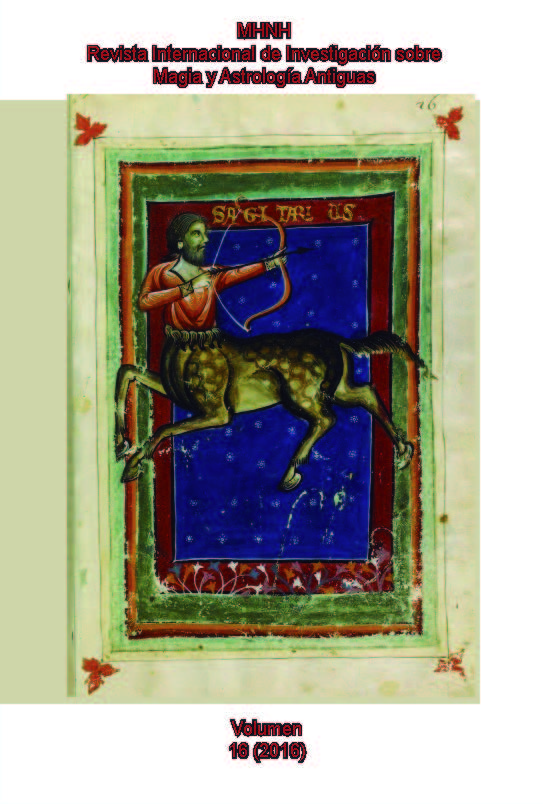Statues and Religious Controversies in Late Antiquity: The Tradition of “Animated Statues” between Magic, Sorcery and Oracular Practices
DOI:
https://doi.org/10.24310/mhnh.vi16.15633Abstract
In Late Antiquity the statues of deities were at the center of controversy between pagans and Christians and the subject of the religious policy of the emperors. In this paper, I will examine the tradition of the “animated” statues, simulacra of gods that for different circumstances could become “alive” and communicate with men: in addition to cases of statues animated through tricks or miraculous events, of particular interest are the beliefs about the statues that pronounced oracles, the “magical” statues and the statues animated through theurgic rituals. This survey could clarify the reasons for the condemnation of mythological and cultic statues by Christians and, at the same time, analyze the different ways in which the statues could be perceived by “pagans” in the complex context of late antique society.
Downloads
Metrics

Downloads
Published
How to Cite
Issue
Section
License
This work is licensed under a Creative Commons Attribution-NonCommercial-NoDerivatives 4.0 International License.
All contents published in MHNH. Revista Internacional de Investigación sobre Magia y Astrología Antiguas are protected under the Creative Commons Attribution-NonCommercial-ShareAlike 4.0 International (CC BY-NC-SA 4.0) license. All about this license is available in the following link: <http://creativecommons.org/licenses/by-nc-sa/4.0>
Users can copy, use, redistribute, share and exhibit publicly as long as:
- The original source and authorship of the material are cited (Journal, Publisher and URL of the work).
- It is not used for comercial purposes.
- The existence of the license and its especifications are mentioned.
There are two sets of authors’ rights: moral and property rights. Moral rights are perpetual prerogatives, unrenounceable, not-transferable, unalienable, imprescriptible and inembargable. According to authors’ rights legislation, MHNH. Revista Internacional de Investigación sobre Magia y Astrología Antiguas recognizes and respects authors moral rights, as well as the ownership of property rights, which will be transferred to University of Malaga in open access. The property rights are referred to the benefits that are gained by the use or the dissemination of works. MHNH. Revista Internacional de Investigación sobre Magia y Astrología Antiguas is published in an open access form and it is exclusively licenced by any means for doing or authorising distribution, dissemination, reproduction, , adaptation, translation or arrangement of works.
Authors are responsable for obtaining the necessary permission to use copyrighted images.






